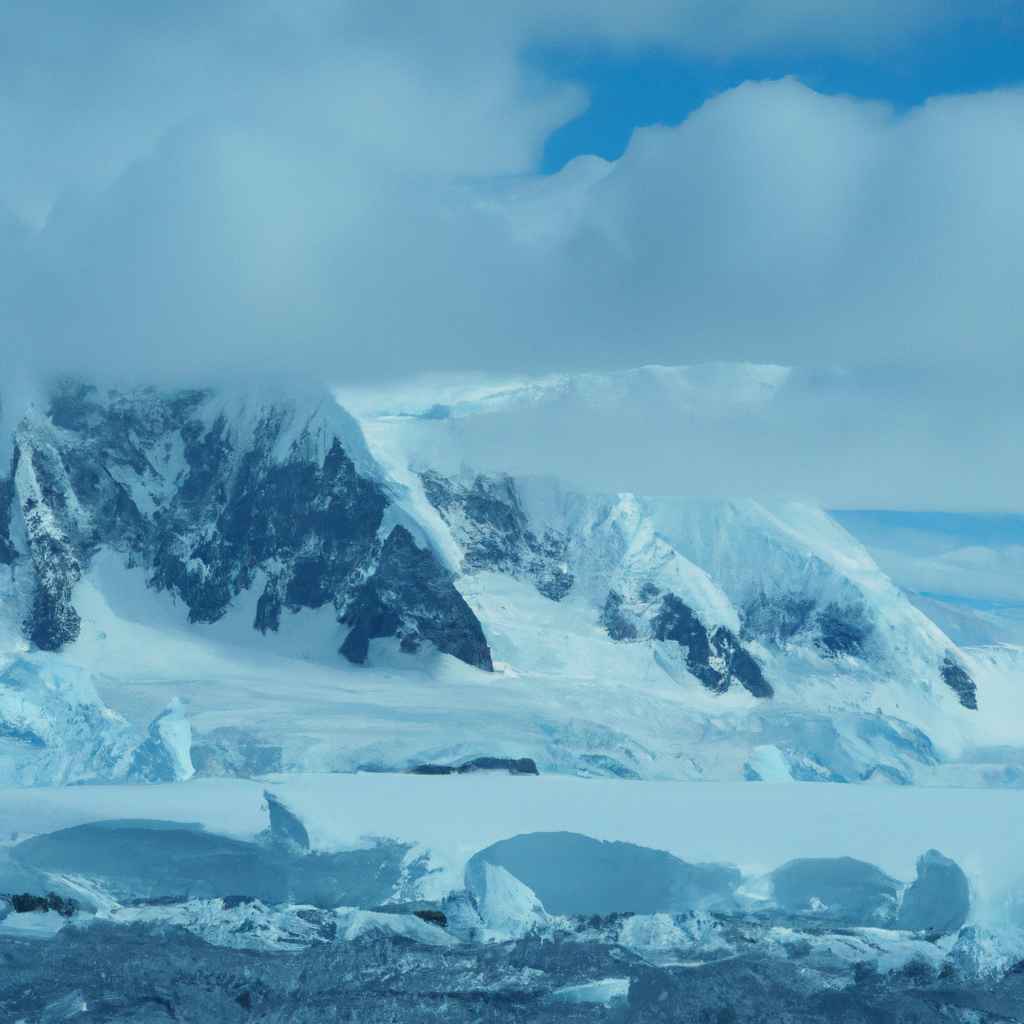Discover the untapped potential of sustainable tourism in Antarctica. Join us as we explore whether this icy continent could be the next frontier for responsible travel.
Exploring Antarctica’s Unique Ecosystem
Antarctica, the frozen continent at the southernmost tip of the Earth, harbors a remarkable and diverse ecosystem unlike any other on the planet. Exploring Antarctica’s Unique Ecosystem offers a glimpse into a world of extremes, where icy landscapes, pristine waters, and a wide array of wildlife coexist in a delicate balance.
Ice-Covered Wonders
Antarctica’s Unique Ecosystem is characterized by its vast ice sheets and glaciers that cover over 98% of the continent. These icy landscapes create a stunning backdrop for exploration, with towering icebergs, shimmering ice caves, and expansive glaciers that stretch as far as the eye can see. The sound of ice cracking and calving into the sea is a constant reminder of the dynamic nature of this frozen wilderness.
Marine Marvels
Beneath the icy surface, Antarctica’s waters teem with life, making it a hotspot for marine biodiversity. Exploring Antarctica’s Unique Ecosystem means encountering a rich variety of marine species, from graceful penguins and seals to majestic whales and krill, the foundation of the Antarctic food chain. The sight of a humpback whale breaching the surface or a leopard seal hunting its prey showcases the raw beauty and power of Antarctica’s marine world.
Land of Extremes
Antarctica’s harsh climate and extreme conditions have shaped a unique terrestrial ecosystem adapted to survive in this unforgiving environment. From resilient mosses and lichens to seabird colonies and hardy mammals like the Antarctic fur seal, life finds a way to thrive in Antarctica’s Unique Ecosystem. Explorers can witness the intricate dance of life in action, from nesting albatrosses to curious Antarctic skuas scavenging along the shores.
Preserving a Fragile Paradise
As more travelers seek to experience Antarctica’s Unique Ecosystem, conservation efforts become crucial to protect this delicate paradise. Sustainable tourism practices, strict guidelines, and responsible behavior are essential to ensure that future generations can continue to explore and marvel at the wonders of Antarctica. By promoting eco-friendly travel and raising awareness about the fragility of this pristine environment, we can safeguard Antarctica’s Unique Ecosystem for years to come.
In conclusion, Exploring Antarctica’s Unique Ecosystem is a once-in-a-lifetime opportunity to witness nature in its purest form. From ice-covered wonders to marine marvels and the resilient life on land, Antarctica offers an unforgettable experience for those willing to venture into this remote and captivating wilderness. Let’s cherish and protect Antarctica’s Unique Ecosystem for its extraordinary beauty and ecological significance.
Challenges of Sustainable Tourism in Antarctica
antarctica: challenges of sustainable tourism in antarctica
Antarctica, often regarded as one of the last pristine wilderness areas on Earth, has seen a rise in tourism over the past few decades. However, with this increase in visitor numbers comes a range of challenges for ensuring sustainable tourism practices in this fragile environment.
impact on fragile ecosystems
Sustainable tourism in Antarctica faces the significant challenge of minimizing its impact on the continent’s delicate ecosystems. Antarctica’s unique flora and fauna are particularly vulnerable to disturbances caused by human activity. Managing waste, controlling emissions from transportation, and preventing the introduction of invasive species are key concerns for sustainable tourism operators.
climate change and environmental threats
Antarctica is not immune to the effects of climate change, and rising temperatures are already causing shifts in the continent’s environment. Melting ice, changing wildlife behavior, and disruption of ecosystems present challenges for sustainable tourism efforts. Encouraging low-impact travel, promoting research on climate change, and supporting conservation initiatives are essential in addressing these threats.
regulatory frameworks and governance
Effective governance and regulatory frameworks are crucial for promoting sustainable tourism in Antarctica. The Antarctic Treaty System, which designates the continent as a natural reserve devoted to peace and science, plays a key role in regulating human activities. Strengthening enforcement mechanisms, coordinating with tour operators, and monitoring compliance with environmental guidelines are vital for ensuring sustainable tourism practices.
balancing conservation and tourism
One of the main challenges of sustainable tourism in Antarctica is finding the balance between conservation efforts and tourism activities. While tourism can raise awareness and support conservation initiatives, it also has the potential to disturb wildlife and habitats. Implementing visitor guidelines, limiting visitor numbers, and promoting ethical wildlife viewing are essential for protecting Antarctica’s natural heritage while allowing visitors to experience its wonders.
community engagement and local benefits
In addition to environmental concerns, sustainable tourism in Antarctica should also prioritize community engagement and local benefits. Supporting local communities, providing training and employment opportunities, and respecting indigenous knowledge are important aspects of responsible tourism practices. By involving local stakeholders in decision-making processes, tourism can contribute to the well-being of both visitors and the host communities.
In conclusion, the challenges of sustainable tourism in Antarctica are multifaceted, requiring a comprehensive approach that addresses environmental, governance, conservation, and community aspects. By promoting responsible travel practices, fostering collaboration among stakeholders, and raising awareness about the importance of protecting Antarctica’s unique ecosystems, sustainable tourism can thrive while safeguarding this extraordinary continent for generations to come.
Balancing Conservation and Tourism in the Antarctic Wilderness
Antarctica, with its pristine wilderness and unique ecosystems, presents a delicate balance between conservation efforts and tourism activities. As interest in polar travel grows, the need to preserve this fragile environment becomes increasingly important. Let’s explore how conservation and tourism can coexist harmoniously in the Antarctic region.
preservation of Antarctic ecosystems
The Antarctic wilderness is home to a wide array of wildlife, including penguins, seals, whales, and seabirds. Preserving these ecosystems is crucial to maintaining the delicate balance of this remote continent. Strict regulations are in place to protect the environment, with designated protected areas and guidelines for visitor conduct.
Antarctica’s unique climate and biodiversity make it a hotspot for scientific research. Conservation efforts focus on minimizing human impact, reducing carbon emissions, and promoting sustainable practices to safeguard the continent for future generations.
sustainable tourism practices
With the rise in eco-friendly travel, sustainable tourism practices have become increasingly popular in Antarctica. Eco-conscious travelers can choose expedition cruises that follow strict environmental guidelines, limiting the number of visitors and ensuring minimal impact on the environment.
Responsible tour operators offer educational programs to raise awareness about environmental conservation and encourage visitors to participate in research initiatives. By promoting ethical wildlife viewing and supporting local communities, tourism can become a force for positive change in Antarctica.
challenges and opportunities
While balancing conservation and tourism poses challenges, it also presents opportunities for innovation and collaboration. Partnerships between governments, NGOs, and the private sector can lead to sustainable solutions that benefit both the environment and the economy.
- Investing in renewable energy sources for tourism operations
- Implementing waste management strategies to reduce pollution
- Supporting scientific research and conservation projects
By embracing a holistic approach to tourism development, Antarctica can continue to captivate visitors while safeguarding its natural wonders for generations to come.

